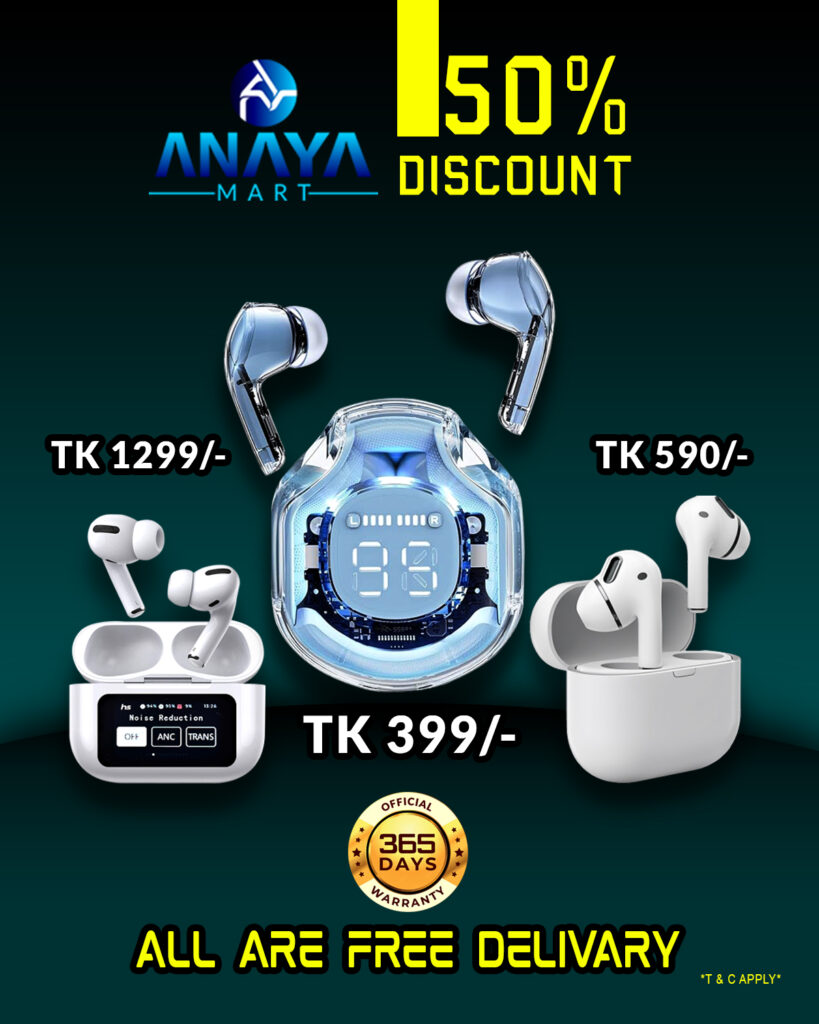CAD Operation Level-3 Suggestion for NSDA V-8
Written Test CAD Operation Level-3 Suggestion V-8 by Job Edu BD
First, test yourself with the following MCQs, if you can’t do it, you can check the answer by clicking on the answer button.
CAD Operation Level-3 Suggestion for NSDA V-8
1. Find the false statement in regards with “If an array is made associative”.
a. You can’t use Boolean operations on the array elements
b. To make the array non-associative you need to use explode command on it
c. The array can be edited again by selecting it
d.The array can’t be modified in any way once it is made associative
2. What is the shortcut key for “Find and Replace” dialog box?
a. Ctrl + F
b. Ctrl+R
c. Ctrl + H
d. Ctrl+Shift + F
3. In AutoCAD what is the keyboard shortcut to activate the orbit command for rotating the 3D view.
a. O
b. R
c. V
d. N
4. Where we use Stirrup?
a. Column
b. door
c. window
d. kitchen
5. What is done in the store room of building?
a. cooking
b. planting
c. keeping Goods
d. sleeping
6. which kind of stair is used in residential house?
a. One-way
b. Geometrical
c. Spiral
d. Dog legged
7. The main purpose of the OH&S legislation is to:
a. defines standards and responsibilities
b. tell the worker how to do his or her job
c. tells managers how to manage their work sites
d. all of the above
8. What is the shortcut for zoom command?
a. Z + Enter
b. Rotate mouse wheel
c. ZOOM Command
d. All of the above
9. Which state grid is used to design perspective?
a. Parametric
b. Isometric
c. Pro-optic
d. Rectangular
10. What is the ratio of slope of Ramp?
a. 1 : 6
b. 1: 8
c. 1: 10
d. 1: 5
11. A Boolean operation that is used to select interfering region between solids
a. Union
b. Intersect
c. Subtract
d.None of the above
12. Which AutoCAD workspace is ideal for editing and manipulating 3d surface?
a. Drafting & Annotation
b. 3D modelling
c. 3D drafting & annotation
d. Sheet set manager
13. Why we use Planer Surface?
a. Creates a surface in the space between several curves in the U and V directions, including surface and solid edge sub objects.
b. Creates a planar surface.
c. Creates a continuous blend surface between two existing surfaces.
d. Creates a new surface by fitting a cap over a surface edge that forms a closed loop. .
14. What are the function of SURFBLEND?
a. Creates a surface in the space between several curves in the U and V directions, including surface and solid edge sub objects.
b. Creates a planar surface.
c. Creates a continuous blend surface between two existing surfaces.
d. Creates a new surface by fitting a cap over a surface edge that forms a closed loop.
15. What is thicken in AutoCAD?
a. Creates new 3D solids and surfaces by slicing, or dividing, existing objects.
b. Converts a surface into a 3D solid with a specified thickness.
c. Imprints 2D geometry on a 3D solid or surface, creating additional edges on planar faces
d. The main working environment where we interactively locate and use the needed 3D tools
16. Which is means by interface in AutoCAD?
a. Creates new 3D solids and surfaces by slicing, or dividing, existing objects.
b. Converts a surface into a 3D solid with a specified thickness.
c. 2D geometry on a 3D solid or surface, creating additional edges on planar faces
d. The main working environment where we interactively locate and use the needed 3D tools.
17. How many pixels grip size in AutoCAD?
a. 1-255
b. 10-254
c. 1-254
d. 0-255
18. Offset Section means
a. When a cutting plane line passes entirely through an object
b. A view of an object showing one-half of the view in section.
c. Used for complex parts that has several important features that cannot be sectioned using a straight cutting plane.
d. A section removed from its normal projected position in the standard arrangement of views
19. The material is attached-
a. Face
b. blank space
c. any space
d. none of the above
20. What is the shortcut command in Render Preferences?
a) REPEF
b) RPREF
c) RRPEF
d) RFRPE
21. What safety measure is essential during residential electrical installation to prevent electrical shock?
a. Overloading circuits
b. Using bare wires
c. proper grounding and earthing
d. Installing fewer electrical outlets
22. Which key is used to select all the text in the document?
a. Ctrl +T
b. Ctrl +A
c. Ctrl +F
d. Ctrl +N
23. Generally in which height shuttering start from feet?
a) 3’-0”
b) 6’-0”
c) 5’-0”
d) 2’-0”
24. What will we say if the structure built on river less than 6 meter?
a) Culvert
b) Deck bridge
c) Bridge
d) Pool
25. When we use Sketches?
a) after the final drawing
b) before the final drawing
c) after Rajuk permission
d) none of these
26. Why used model materials?
27. How to use solview command in AutoCAD?
28.। What is the purpose of the command section plane in AutoCAD?
29. What is REGEN?
30. What is the difference between a blend edge and a fillet edge?
1. The main purpose of the OH&S legislation is to:
a. defines standards and responsibilities
2. What is the shortcut key for “Find and Replace” dialog box?
c. Ctrl + H
3. What is the ratio of slope of Ramp?
b. 1: 8
4. Where we use Stirrup?
a. Column
5. What is done in the store room of building?
c. keeping Goods
6. which kind of stair is used in residential house?
d. Dog legged
7. Find the false statement in regards with “If an array is made associative”.
d. The array can’t be modified in any way once it is made associative
8. What is the shortcut for zoom command?
a. Z + Enter
9. Which state grid is used to design perspective?
b. Isometric
10. In AutoCAD what is the keyboard shortcut to activate the orbit command for rotating the 3D view.
a. O
11. A Boolean operation that is used to select interfering region between solids
b. Intersect
12. Which AutoCAD workspace is ideal for editing and manipulating 3d surface?
c. 3D drafting & annotation
13. Why we use Planer Surface?
b. Creates a planar surface.
14. What are the function of SURFBLEND?
c. Creates a continuous blend surface between two existing surfaces.
15. What is thicken in AutoCAD?
a. Creates new 3D solids and surfaces by slicing, or dividing, existing objects.
16. Which is means by interface in AutoCAD?
a. Creates new 3D solids and surfaces by slicing, or dividing, existing objects.
17. How many pixels grip size in AutoCAD?
a. 1-255
18. Offset Section means
a. When a cutting plane line passes entirely through an object
19. The material is attached-
a. Face
20. What is the shortcut command in Render Preferences?
b) RPREF
21. What safety measure is essential during residential electrical installation to prevent electrical shock?
c. proper grounding and earthing
22. Which key is used to select all the text in the document?
b. Ctrl +A
23. Generally in which height shuttering start from feet?
c) 5’-0”
24. What will we say if the structure built on river less than 6 meter?
a) Culvert
25. When we use Sketches?
b) before the final drawing
সংক্ষিপ্ত প্রপের উত্তর দাওঃ
26. Why used model materials?
Answer: Using materials makes any model more realistic.
27. How to use solview command in AutoCAD?
Answer: SOLVIEW must be run on a layout tab. If the Model tab is current, the last active layout tab is made current. SOLVIEW places the viewport objects on the VPORTS layer
28.। What is the purpose of the command section plane in AutoCAD?
Answer: Creates a section object that acts as a cutting plane through 3D objects, and point clouds.
29. What is REGEN?
Answer: REGEN regenerates the drawing with the following effects: Recomputes the locations and visibility for all objects in the current viewport
30. What is the difference between a blend edge and a fillet edge?
Answer: Blend Edge creates a fillet with variable curvature which is curvature continuous to the adjacent surfaces
"You will pass just by asking the mentioned questions, it's not like that at all, but chances are upto 80% to get common. This is just a suggestion. This question is not copied from any board question"
Computer-aided design (CAD) is the use of computers (or workstations) to aid in the creation, modification, analysis, or optimization of a design. This software is used to increase the productivity of the designer, improve the quality of design, improve communications through documentation, and to create a database for manufacturing. Designs made through CAD software help protect products and inventions when used in patent applications. CAD output is often in the form of electronic files for print, machining, or other manufacturing operations. The terms computer-aided drafting (CAD) and computer-aided design and drafting (CADD) are also used.
Its use in designing electronic systems is known as electronic design automation (EDA). In mechanical design it is known as mechanical design automation (MDA), which includes the process of creating a technical drawing with the use of computer software.
CAD software for mechanical design uses either vector-based graphics to depict the objects of traditional drafting, or may also produce raster graphics showing the overall appearance of designed objects. However, it involves more than just shapes. As in the manual drafting of technical and engineering drawings, the output of CAD must convey information, such as materials, processes, dimensions, and tolerances, according to application-specific conventions.
CAD may be used to design curves and figures in two-dimensional (2D) space; or curves, surfaces, and solids in three-dimensional (3D) space.
CAD is an important industrial art extensively used in many applications, including automotive, shipbuilding, and aerospace industries, industrial and architectural design (building information modeling), prosthetics, and many more. CAD is also widely used to produce computer animation for special effects in movies, advertising and technical manuals, often called DCC digital content creation. The modern ubiquity and power of computers means that even perfume bottles and shampoo dispensers are designed using techniques unheard of by engineers of the 1960s. Because of its enormous economic importance, CAD has been a major driving force for research in computational geometry, computer graphics (both hardware and software), and discrete differential geometry.
The design of geometric models for object shapes, in particular, is occasionally called computer-aided geometric design (CAGD).
Overview
Computer-aided design is one of the many tools used by engineers and designers and is used in many ways depending on the profession of the user and the type of software in question.
CAD is one part of the whole digital product development (DPD) activity within the product lifecycle management (PLM) processes, and as such is used together with other tools, which are either integrated modules or stand-alone products, such as:
- Computer-aided engineering (CAE) and finite element analysis (FEA, FEM)
- Computer-aided manufacturing (CAM) including instructions to computer numerical control (CNC) machines
- Photorealistic rendering and motion simulation
- Document management and revision control using product data management (PDM)
CAD is also used for the accurate creation of photo simulations that are often required in the preparation of environmental impact reports, in which computer-aided designs of intended buildings are superimposed into photographs of existing environments to represent what that locale will be like, where the proposed facilities are allowed to be built. Potential blockage of view corridors and shadow studies are also frequently analyzed through the use of CAD.
Types

There are several different types of CAD, each requiring the operator to think differently about how to use them and design their virtual components in a different manner. Virtually all of CAD tools rely on constraint concepts that are used to define geometric or non-geometric elements of a model.
2D CAD
There are many producers of the lower-end 2D sketching systems, including a number of free and open-source programs. These provide an approach to the drawing process where scale and placement on the drawing sheet can easily be adjusted in the final draft as required, unlike in hand drafting.
3D CAD
3D wireframe is an extension of 2D drafting into a three-dimensional space. Each line has to be manually inserted into the drawing. The final product has no mass properties associated with it and cannot have features directly add to it, such as holes. The operator approaches these in a similar fashion to the 2D systems, although many 3D systems allow using the wireframe model to make the final engineering drawing views.
3D “dumb” solids are created in a way analogous to manipulations of real-world objects. Basic three-dimensional geometric forms (e.g., prisms, cylinders, spheres, or rectangles) have solid volumes added or subtracted from them as if assembling or cutting real-world objects. Two-dimensional projected views can easily be generated from the models. Basic 3D solids do not usually include tools to easily allow the motion of the components, set their limits to their motion, or identify interference between components.
There are several types of 3D solid modeling
- Parametric modeling allows the operator to use what is referred to as “design intent”. The objects and features are created modifiable. Any future modifications can be made by changing on how the original part was created. If a feature was intended to be located from the center of the part, the operator should locate it from the center of the model. The feature could be located using any geometric object already available in the part, but this random placement would defeat the design intent. If the operator designs the part as it functions, the parametric modeler is able to make changes to the part while maintaining geometric and functional relationships.
- Direct or explicit modeling provide the ability to edit geometry without a history tree. With direct modeling, once a sketch is used to create geometry it is incorporated into the new geometry, and the designer only has to modify the geometry afterward without needing the original sketch. As with parametric modeling, direct modeling has the ability to include the relationships between selected geometry (e.g., tangency, concentricity).
- Assembly modelling is a process which incorporates results of the previous single-part modelling into a final product containing several parts. Assemblies can be hierarchical, depending on the specific CAD software vendor, and highly complex models can be achieved (e.g. in building engineering by using computer-aided architectural design software)
Freeform CAD
Top-end CAD systems offer the capability to incorporate more organic, aesthetic and ergonomic features into the designs. Freeform surface modeling is often combined with solids to allow the designer to create products that fit the human form and visual requirements as well as they interface with the machine.
Post review
Finding Your Post
CAD Operation Level-3 Suggestion for NSDA V-6 CAD Operation Level-3 Suggestion for NSDA V-6 NSQF / NTVQF CAD Operation Level-3 SCAD Operation Level-3 Suggestion for NSDA V-6uggestion V-4, NSQF NTVQF, CAD Operation Level-3 Suggestion V-4, Job Edu BD, NSDA BTEB, NSDA / BTEB Suggestion Vol-1 NSQF NTVQF NADA BTEB CAD Operation Level-3 Suggestion for NSDA V-6
CAD Operation Level-3 Suggestion for NSDA V-6 NSQF / NTVQF CAD Operation Level-3 Suggestion V-4, NSQF NTVQF, CAD Operation Level-3 Suggestion V-4, Job Edu BD, NSDA BTEB, NSDA / BTEB Suggestion Vol-1 NSQF NTVQF NADA BTEB CAD Operation Level-3 Suggestion for NSDA V-6
CAD Operation Level-3 Suggestion for NSDA V-6 NSQF / NTVQF CAD Operation Level-3 Suggestion V-4, NSQF NTVQF, CAD Operation Level-3 Suggestion V-4, Job Edu BD, NSDA BTEB, NSDA / BTEB Suggestion Vol-1 NSQF NTVQF NADA BTEB CAD Operation Level-3 Suggestion for NSDA V-6




